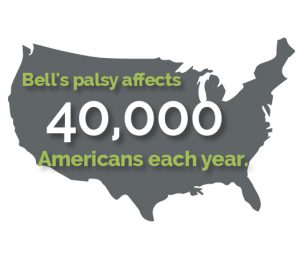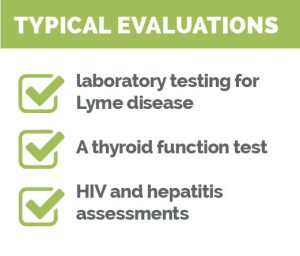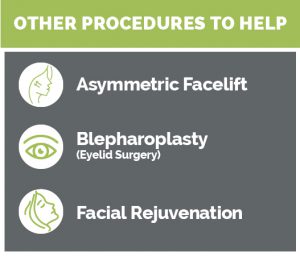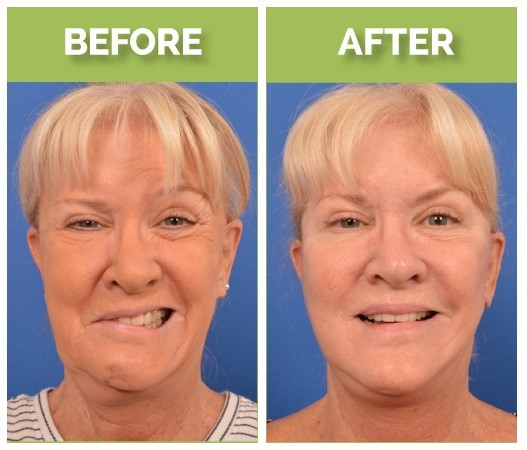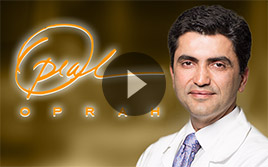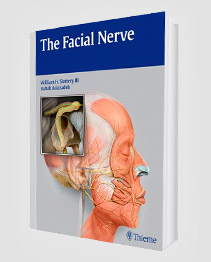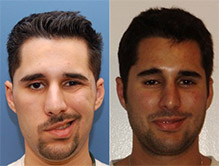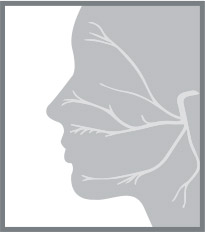Modified Selective Neurectomy for Facial Paralysis
Modified selective neurectomy, also known as selective neurolysis, is a groundbreaking smile reanimation procedure created by globally recognized and Harvard-trained facial paralysis and reconstructive surgeon Dr. Babak Azizzadeh. It is a permanent facial paralysis treatment option that has helped many patients regain the ability to produce a natural, spontaneous smile and improve their quality of life and non-verbal communication capabilities.
This guide offers insights into selective neurectomy, how the procedure is performed, and its benefits. By doing so, the guide can be used to help determine if selective neurolysis is the right smile reanimation treatment.
What Is Selective Neurolysis
Selective neurolysis addresses the abnormal regeneration of the facial nerves. It is performed by Dr. Azizzadeh, who focuses on correcting “mis-wiring” of the facial nerves.
How Can Selective Neurectomy Help Create a Natural Smile?
Facial paralysis, synkinesis, Bell’s palsy, Ramsay Hunt syndrome, and acoustic neuromas can inhibit a patient’s ability to smile, frown, and produce other facial expressions. Selective neurectomy can be used to correct these problems.
During selective neurectomy, Dr. Azizzadeh identifies facial nerve branches that connect to different muscles responsible for facial expressions. Dr. Azizzadeh ensures that all of the appropriate facial nerve branches are preserved and reduces the activity of the nerves that activate unwanted facial muscles that negatively impact a patient’s ability to produce facial expressions. This unique approach allows Dr. Azizzadeh to address unwanted facial muscle movements and ensure the patient can naturally produce facial expressions once again.
 What Are the Benefits of Selective Neurectomy?>
What Are the Benefits of Selective Neurectomy?>
Few facial reanimation techniques can match the benefits provided by selective neurectomy. The primary benefits associated with selective neurolysis include:
- Improved smile symmetry
- Enhanced facial symmetry
- Increased facial muscle coordination
- Reduced functional tightness
Dr. Azizzadeh offers photos that highlight the benefits of selective neurectomy. He encourages patients to view these images, so they can understand how a selective neurolysis procedure can deliver long-lasting results.
Who Is the Ideal Candidates for Selective Neurectomy?
The ideal candidate for selective neurectomy deals with facial paralysis or synkinesis or has not fully recovered from Bell’s palsy. Additionally, patients with Ramsay Hunt syndrome or those experiencing facial paralysis due to an acoustic neuroma may be candidates for selective neurectomy.
Dr. Azizzadeh won’t recommend a selective neurectomy unless he believes the surgery can be performed safely and benefits his patient. If a patient does not qualify for selective neurolysis, Dr. Azizzadeh can recommend alternative treatment options.
How Does Selective Neurectomy Help Facial Paralysis Patients?
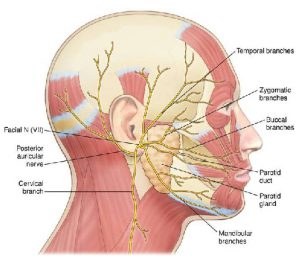
- Frontal
- Zygomatic
- Buccal
- Marginal mandibular
- Platysmal
Selective neurolysis involves meticulously mapping out the facial nerves with intraoperative electromyography (EMG) and decreasing the activity of the nerves that hamper the smile mechanism. Dr. Azizzadeh also releases the platysma muscle that pulls the corner of the mouth down, resulting in spontaneous reanimation of the face.
Selective Neurolysis Is The First Permanent Treatment For Bell’s Palsy Patients
Bell’s palsy is a leading cause of facial paralysis in the United States. It disrupts the function of the facial nerve, resulting in facial weakness or paralysis.
In approximately 85% of cases, Bell’s palsy will disappear on its own. However, in roughly 10% of cases, patients experience synkinesis. And, in 5% of cases, patients experience permanent facial paralysis.
If a Bell’s palsy patient does not fully recover within eight to 12 months of treatment or experiences synkinesis, he or she may qualify for selective neurolysis. Dr. Azizzadeh can perform a modified selective neurectomy approximately one year after the onset of Bell’s palsy symptoms.
Selective Neurolysis For Synkinesis
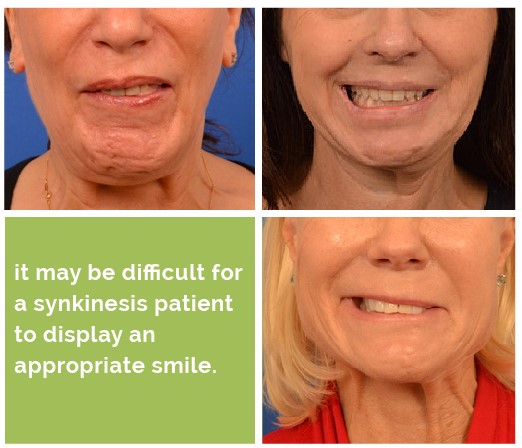
Synkinesis can cause the corner of a patient’s mouth to pull upward. Or, the synkinetic (simultaneous) movement of muscles can cause the corner of a patient’s mouth (depressor anguli oris, platysma, and mentalis muscles) to droop and elevate nearby muscles (zygomaticus major and minor). In either scenario, it can be difficult for a synkinesis patient to smile naturally.
Selective neurolysis is a safe, effective treatment for synkinesis. It can help patients permanently address their synkinesis symptoms.
Selective Neurolysis For Ramsay Hunt Syndrome Patients
Ramsay Hunt syndrome can cause synkinesis and permanent facial paralysis. As such, Ramsay Hunt syndrome patients may qualify for selective neurolysis.
Selective Neurolysis For Acoustic Neuroma Patients
Acoustic neuroma patients sometimes experience synkinesis. Therefore, Dr. Azizzadeh may recommend selective neurolysis for acoustic neuroma patients.
How Is Selective Neurolysis Performed?
A modified selective neurectomy is performed at an outpatient treatment center. The downtime and risks associated with selective neurolysis are minimal in comparison to other facial nerve procedures. Furthermore, selective neurolysis treatment results generally can be seen the day after surgery.
Sometimes, Dr. Azizzadeh may recommend selective neurectomy be performed in conjunction with other procedures to help a patient achieve the optimal results. Procedures that may be completed in combination with selective neurolysis include:
- Asymmetric Facelift: Helps a patient address facial asymmetry, leading to a more balanced and natural-looking facial appearance.
- Blepharoplasty (Eyelid Surgery):Enables a patient to address the appearance of droopy eyelids and may require the removal of excess fat, muscle and skin.
- Facial Rejuvenation: Allows a patient to revitalize the facial appearance; facelift and neck lift treatments are two of the most common facial rejuvenation procedures that may be performed at the same time as selective neurolysis.
Dr. Azizzadeh customizes a selective neurolysis procedure to his patient. He also tracks his patients’ progress in the days, weeks, and months following selective neurolysis to ensure they can get the best results.
What to Expect During a Selective Neurolysis Consultation
To help a patient evaluate selective neurolysis and other facial reanimation treatments, Dr. Azizzadeh requests a consultation. He uses the consultation to learn about a patient and evaluate their facial movement and facial muscles. The consultation also gives a patient the opportunity to ask questions and learn about Dr. Azizzadeh’s distinct approach to nerve disorders and treatments. If Dr. Azizzadeh determines a patient qualifies for selective neurolysis, he discusses the surgery and recovery process.
What to Expect After Selective Neurolysis Surgery
The potential side effects and recovery period associated with selective neurectomy are limited in comparison to other facial reanimation procedures.
Selective neurolysis patients may notice improvements in their ability to generate a natural smile in the first few days after surgery, and the final results will become apparent in the months to follow.
Dr. Azizzadeh may recommend neuromuscular retraining (NMR) after surgery. NMR involves the use of exercises that help teach and retrain the brain to coordinate facial muscle movements.
Periorbital and contralateral Botox may be recommended following selective neurectomy surgery as well. Botox helps relax unwanted muscle movements and reduce tension in areas of the face that are hyperactive.
Facial Reanimation Surgery: A Real World Example
Mary Jo Buttafuoco took a bullet to the head when she was 37 years old. The gunshot caused her to lose hearing in her right ear and paralyzed the right side of her face. It also made it virtually impossible for Buttafuoco to smile.
Buttafuoco sought help from Dr. Azizzadeh in 2005. At that point, Buttafuoco was self-conscious about her looks and had lost much of her self-confidence. Fortunately, Dr. Azizzadeh was able to use advanced facial reanimation techniques to provide Buttafuoco with the support that she needed.
In 2005, Dr. Azizzadeh completed a static facial suspension, facelift, and eye lift procedures to improve Buttafuoco’s facial function and symmetry. In 2017, Dr. Azizzadeh performed a selective neurolysis procedure on Buttafuoco. The result: Buttafuoco can see all of her teeth when she smiles, has more self-confidence than ever before, and even wants to take selfies!
Learn More About Selective Neurectomy Surgery
Dr. Azizzadeh is available to teach patients about selective neurolysis. To learn more about selective neurectomy, please contact The Facial Paralysis Institute online or call us at (310) 657-2203 to schedule a consultation with Dr. Azizzadeh.
Request your consultation with Dr. Azizzadeh today
Call us at (310) 657-2203 to schedule an appointment.
Schedule a Consultation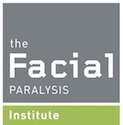

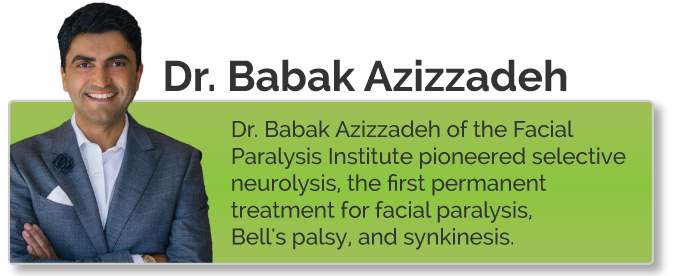
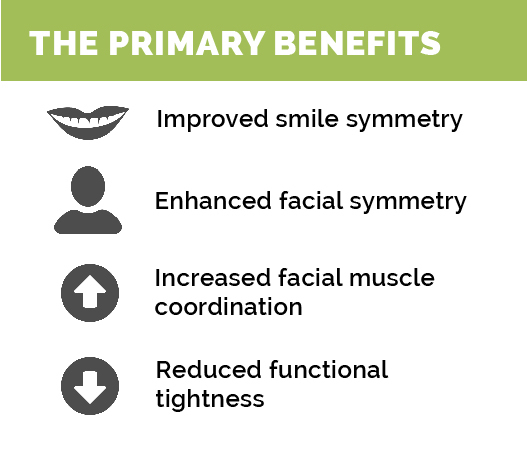 What Are the Benefits of Selective Neurectomy?>
What Are the Benefits of Selective Neurectomy?>